Acidity In Cake – how acidic ingredients like lemon, chocolate and buttermilk affect a cake recipe.
A new baking science experiment by our contributor, Summer Stone-Polzel.
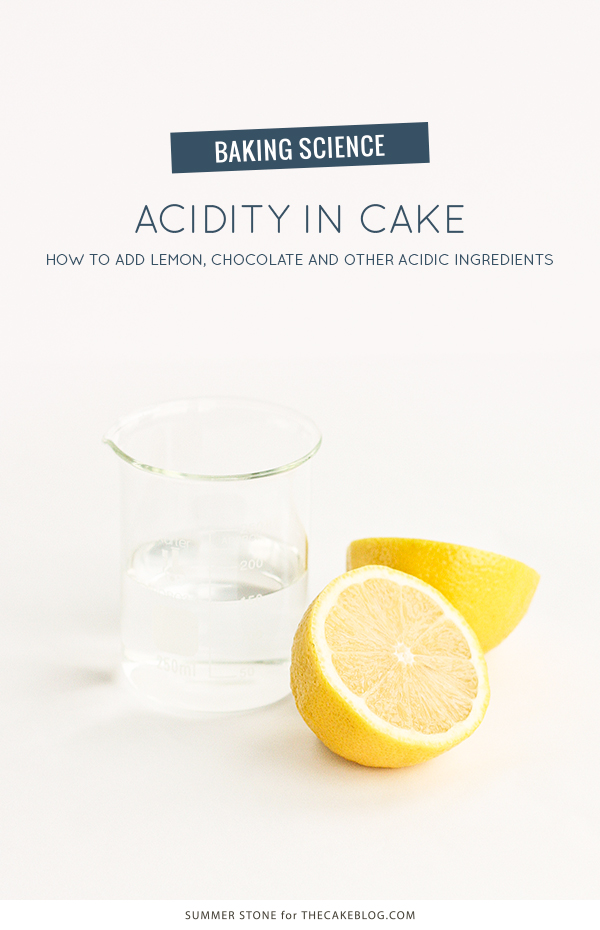
Acidic ingredients play an important role in cake baking. They add and enhance flavors as well as contribute to leavening and tenderization of cakes. Batter acidity can come from a wide variety of sources including vinegar, lemon juice, chocolate, buttermilk, coffee, brown sugar, fruits and vegetables to name a few. While acid is most definitely a baker’s friend, it can also be a source of frustration if it interferes with the molecular integrity of a cake. To gain a better grasp on acid ingredients, I decided to take a look at how increasing the acidity of a cake recipe affected the final outcome. What surprised me was that when you added the acid to your batter seemed more important than how much acid was added. Let’s take a look at what I discovered along the way.
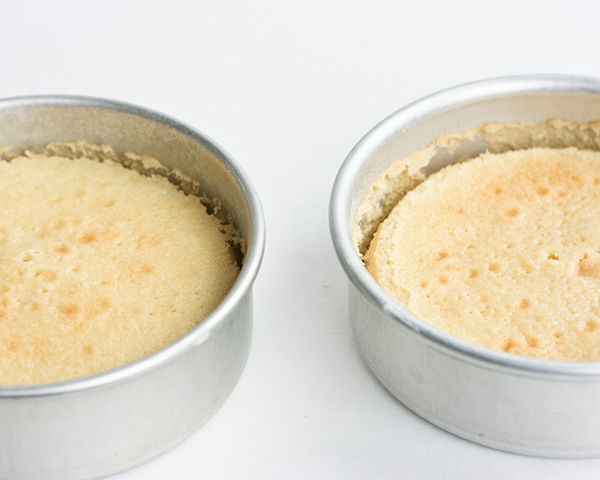
SIMPLE CHEMISTRY
Before we dive into cake experimentation, it helps to know what acids are and how they play a role in baking chemistry. Acidic ingredients are those which give off hydrogen ions (H+) when they are dissolved in water. These newly released hydrogen ions are now free to interact with other molecules in solution. Here are the major alterations to baked goods caused by acid:
1. Protein alteration- Hydrogen ions disrupt the bonds that keep proteins folded into a specific shape and cause them to unravel. This undoing can beneficially tenderize or, in excess, cause problems with the structure of the cake.
2. Starch modification- Acids cause starches to breakdown and gel at a lower temperature. This can cause cake to set more quickly but with less structural support.
3. Browning troubles- Acidic ingredients interfere with the reactions that cause browning in baked foods. The resulting cakes are paler than their alkaline counterpart.
Alkaline/basic ingredients readily accept free-floating hydrogen ions and in effect neutralize acids by chemically reacting with the hydrogen they provide. Baking soda is an example of an alkaline ingredient. When baking soda reacts with an acid such as lemon juice or buttermilk the neutralizing reaction releases carbon dioxide as a byproduct. This carbon dioxide contributes to leavening in baked goods. Baking soda’s alkalinity can also mediate the detrimental effects of acidic ingredients and minimize excessively sour flavors.
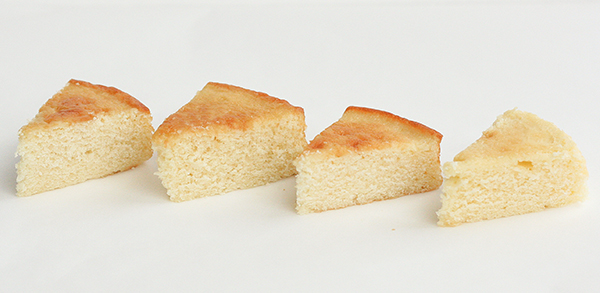
THE EXPERIMENT
In order to test acid’s effects in a typical cake, I baked a number of cakes containing varying amounts of white vinegar (also known as acetic acid) as my acid source. One cake contained no acid and served as a control or baseline for the acid cakes.
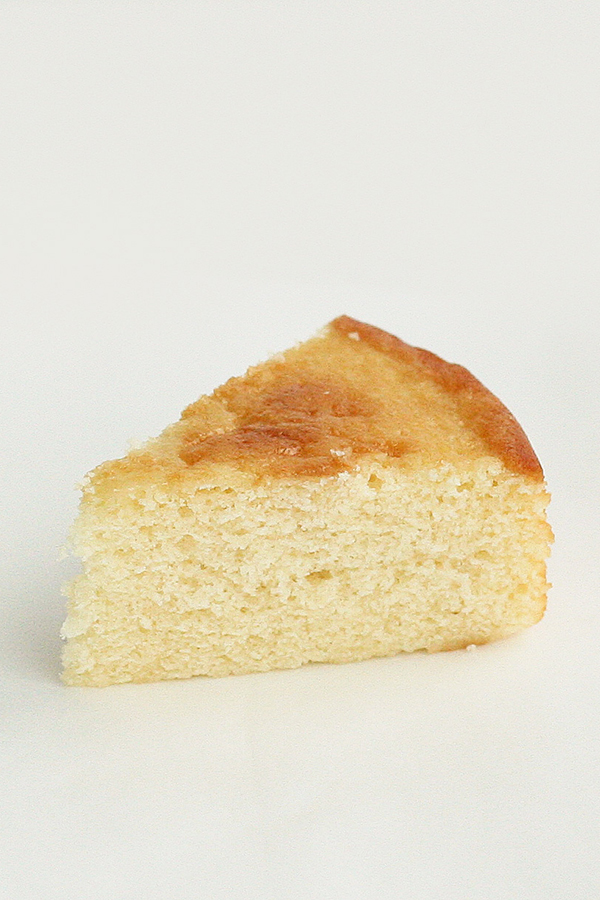
(shown above: control cake with no acid)
The second cake contained acid and a neutralizing amount of baking soda (1/2 teaspoon baking soda per 1 tablespoon of lemon juice or vinegar). The neutralized cake was taller and fluffier than the control cake but tasted markedly of baking soda.
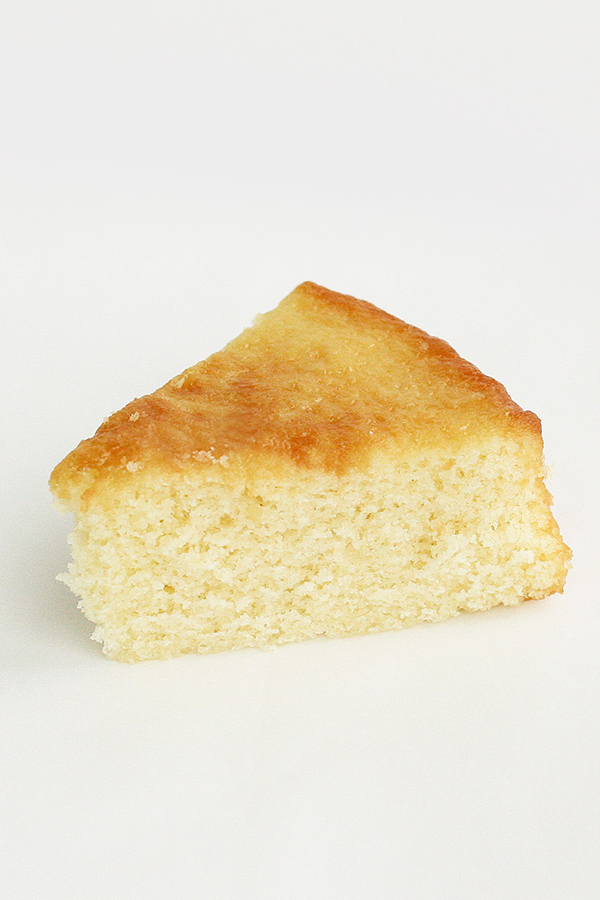
(shown above: neutralized cake)
The remaining cakes contained increasing proportions of vinegar to water (from 1 tablespoon vinegar per standard recipe up to 8 tablespoons vinegar). Surprisingly, each of the vinegar cakes maintained good structural integrity despite the fact that they were a slight bit shorter than the control or neutralized cakes. The most noticeable difference was the pale color of the high acid cakes due to browning disruption. Here’s a look at the cake with 1 tablespoon of vinegar:
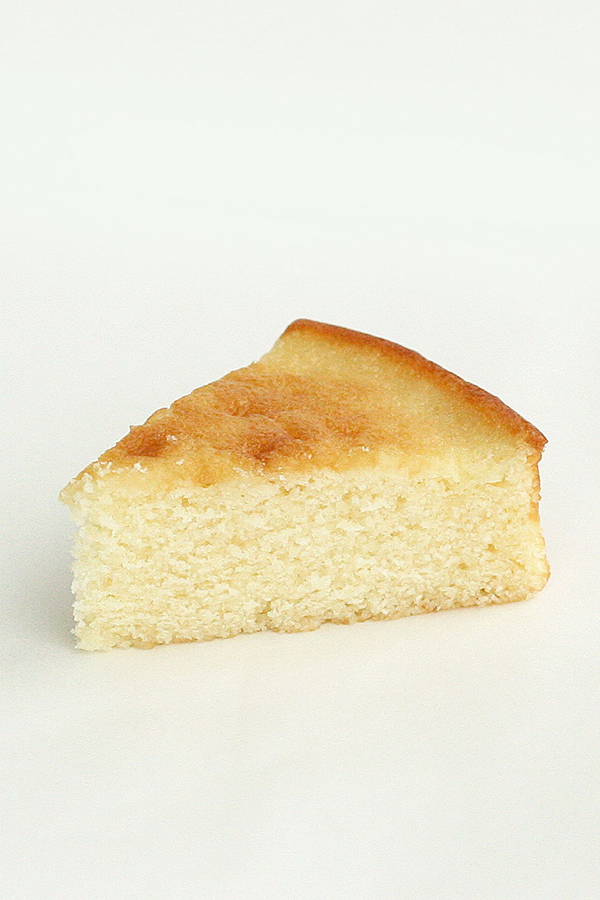
Here’s a look at the cake with 8 tablespoons of vinegar. Notice the lack of browning:
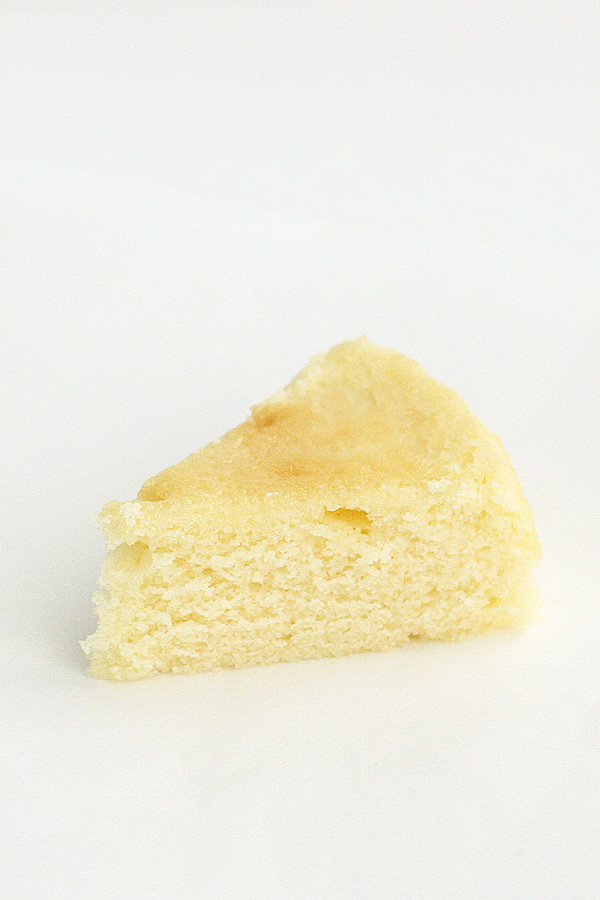
I decided to run one more test to look at the effects of acid. In the first experiment, I added the acid at the end of the mixing process. The next time around I used 6 tablespoons of vinegar per recipe and added it either right after creaming the butter, sugar and eggs, or I added the vinegar to the milk in the recipe and alternately added it to the creamed mixture with the dry ingredients. What I found this time was that the cake with the vinegar added before the flour was mixed in had a weakened and shortened structure compared to cakes where the vinegar was added after the flour.. It appears that when the flour has a chance to be coated with fat the acid has less effect on the cake.
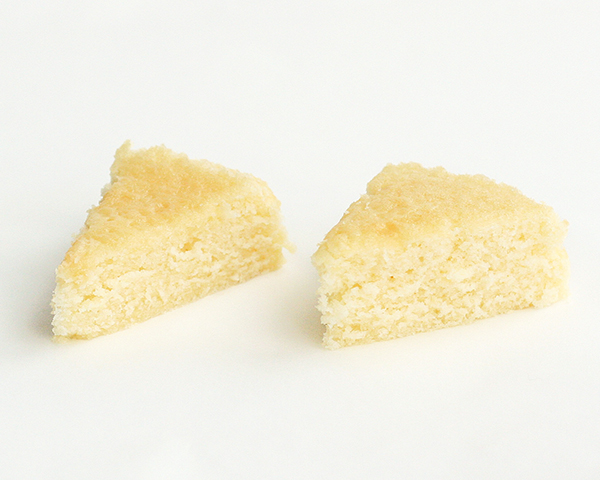
(On left, acid added before flour. On right, acid added after flour)
WRAP UP
Here is a summary of what I discovered with my experimentation of adding acidic ingredients to cake batter:
- You can maintain the structure of your cake with substantial amounts of acidic ingredient if you add acids later in the mixing process to prevent unwanted chemical reactions.
- Baking soda can moderate structural losses and sourness in cake caused by acid through neutralization, but too much baking soda leaves and undesirable flavor. Keep baking soda use below ½ teaspoon per tablespoon of high acid ingredient such as lemon juice or vinegar.
- Cakes which are high in acid content brown poorly. Don’t expect a golden brown color on these cakes and check for doneness earlier than you would a standard cake.
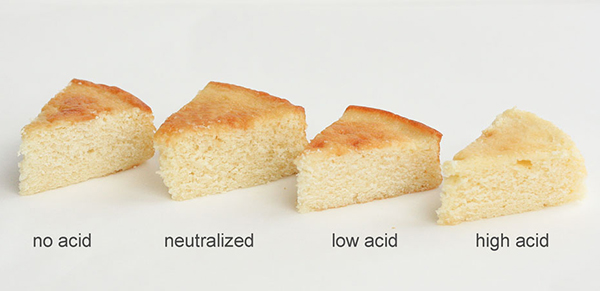
Acidic ingredients can be a great addition to your cakes. By adding acid containing foods at the right time and neutralizing acidic excess you can make the acid work best for you and yield excellent results.
What acidic ingredients do you like to add to your cakes? We especially love lemon! Let us know in the comment section below.
YOU MAY ALSO ENJOY:
Baked to Perfection
Is Your Oven Accurate? And Why It Matters!
Does Ingredient Temperature Matter?
Can You Overmix A Cake?
Does Sifting Make a Better Cake?

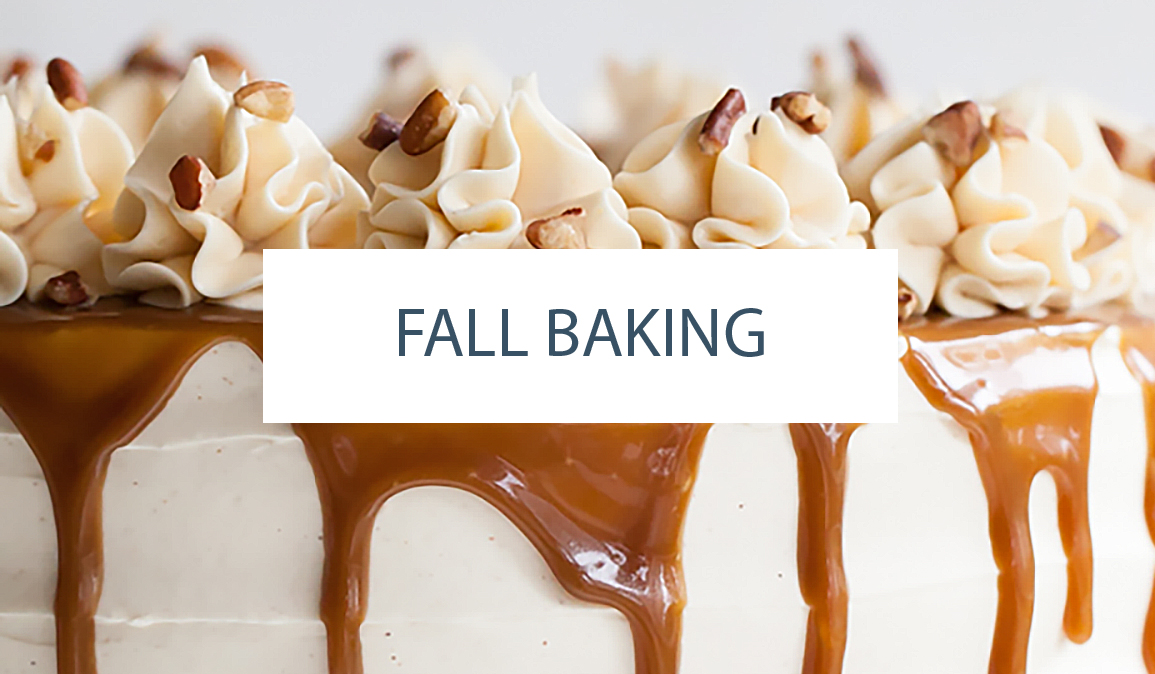

wow!this is great I am looking forward in learning more things about baking and also in trying all the recipes.thank you
Great information! Can I add acetic acid to a cake mix to skip using buttermilk when preparing? What would the result be like
hello I love the tangy flavor in a lemon cake..I have actually used unsweetened lemon Kool-Aid about a tsp. but in comes out gooey and it falls badly..What can I do? Making a homemade pound cake!
No one wants an ugly brown crust line in a white or light colored cake. For an event cake, like a wedding cake, a brown crust line between the white cake crumb and icing layer absolutely ruins the sliced plated presentation. I don’t know of any event cake baker who wants a brown crust on a light colored cake. So this information helps event cake bakers formulate a cake to minimize dreaded brown crust. Thank you.
I just wanted to say thanks so much for this post! I’m in the middle of recipe testing a cake with both beer and orange juice and did a search because I’m trying to understand the chemical reaction better. Your description is spot on. When added after creaming I had the same results as you described. Much better when added after the flour. Thank you!
This article is so informative. Right now, I’m experimenting with strawberries. We’ll see.
I like buttermilk or milk soured with vinegar. Many cake recipes call for adding flour to fat, then alternate adding liquid then flour, liquid & finish with flour. Do you have any idea how this mixing in the acidic liquid affects the structure of the cake? Should we switch to adding all the flour to the fat & then finish off with the acidic liquid?
Thanks!
This was so awesome! I was trying to figure out what to do as I was making up a lemon cake and couldn’t find one that suited! Adding the juice after the flour was so helpful! And to reduce my expectations for a slightly browned cake was also beneficial. I have a basic cake recipe that is really tolerant of the additions of strawberries, blueberries and now lemon! Thanks! I love this blog!
OMG. This info was SO helpful. I have been trying to add lemon to my favorite cake recipe, but when I get the flavor right, the texture would be off and the cake would be flat. Now I know why. Going to try: offsetting lemon juice with a little baking soda, and adding the lemon after the flour. Fingers crossed! Thanks so much for this!
You have singlehandedly combined the art of cake making and the science of the ingredients.
I am a science teacher and it saved me loads of time coming across this first. I shall add a bit of baking soda and lemon after flour. Thanks
Nice blog and very easy to understand your blog
Georgia is best vendor of coffee machine in Gurgaon and we have also coffee premix powder like 1kg or 5kg like that .Mostly we supply premix powder of big brands like nescafe and lipton and our premix made up by purity or latest technology for more details visit our website .
http://www.georgiateacoffee.com/premix-powder.html
Process well described with image. thank you for the Technics